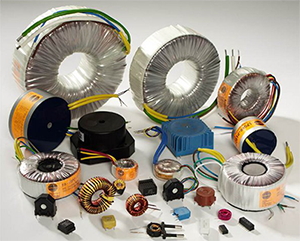
Circuit Innovations
Taking your electronics ideas and turning them into reality
| Home |
| Design Service |
| Kits and Products |
| Film and Television |
| Beginners Corner |
| Surplus Stock |
| Price / Ordering Info |
| Contact Us |
| Terms and Conditions |
| Shopping Cart |
| Links |
| About |
|
Circuit Innovations 24 Leasmires Avenue Easingwold York. YO61 3DU UK |
 |
| Beginner's Corner > Components > Chokes |
|
A choke is simply a coil of insulated wire of one or more turns. The magnetic properties of the choke or its inductance is dependent upon the number of turns of wire, the cross sectional area of the coil, its length and the magnetic properties of the core. The unit of inductance is the Henry which is actually quite a large unit, so it is more common to see component values in one millionth or one thousandth of a henry, micro-henries (µH) or milli-henries (mH). The core material of the choke can have a large effect on the inductance. The simplest form of inductor has an air core which, as its name suggests, doesn't actually have any type of core. The inductance can be significantly increased by winding the coil of wire on a magnetic material such as soft iron or ferrite material. Chokes are typically used in power supply filter circuits or as part of a tuned or resonant circuit. In a filter circuit, the inductance of the choke helps to smooth out any sudden changes of current flow in the circuit. In simple terms, the choke tries to oppose any sudden changes of current flow in the circuit and tries to keep everything at a constant level. The choke can also be used to filter out high frequencies. The impedance of the coil is quite low at low frequencies but increases as the frequency increases. This property can be harnessed and used in a tuned resonant circuit by connecting a choke in parallel with a capacitor. Since the impedance of the capacitor behaves in an opposite way to the impedance of the choke, there will be a particular frequency at which the impedance is at its lowest, this is known as the resonant frequency. This type of circuit can be used as a filter for a specific frequency band or as a tuning circuit in the front end of a radio receiver. |
